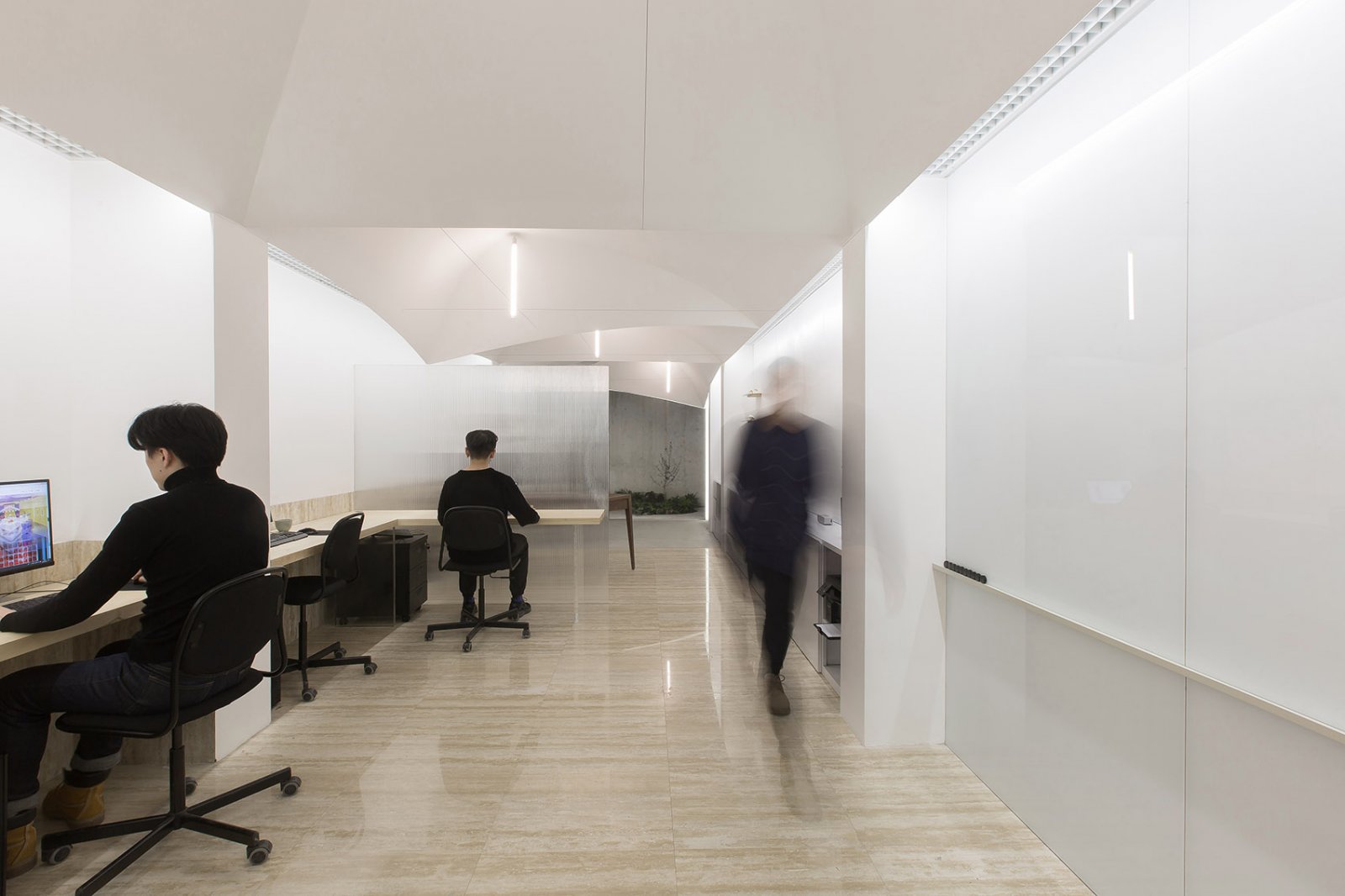Choonwondang Oriental Clinic - Museum Doojin Hwang Architects
2013-02-15 00:00
架构师提供的文本描述。东/中原洞地区的容诺,在那里的朝鲜东方诊所
Text description provided by the architects. The Doneui-dong/Nakwon-dong area of Jongno, where the Choonwondang Oriental Clinic & Museum is located, is twisted, complicated, and narrow, a ‘bowel’ in the city of Seoul. The streets are too confined for construction vehicles to pass through; shabby love hotels are everywhere; cheap eateries sell cold noodles for just under 4 US dollars; the area still evokes its own past, a once infamous red-light district called Jongsam. As you enter the area, the clock seems to run back twenty or thirty years. An ideal location for a Seoul film noir, one may think.
在这里,历史源远流长。东面是宫庙的城墙,西边是宝塔公园。这是首尔最古老的地区之一。春云堂诊所自1953年起就设在这里,是朝鲜战争后成立的。该诊所始建于1847年,始建于朝鲜的巴肯,经过七代人的传承,自诩为首尔历史中心的忠实守护者。病人说,尽管该地区情况恶化,诊所仍将继续存在,新大楼将代表该地区未来的新愿景。因此,设想了一个开放和透明的建筑。
Here history runs deep. To the east are the walls of the Jongmyo Shrine, to the west is the Pagoda Park. Flanked by Donhwamun-ro, this is one of the oldest areas in Seoul. The Choonwondang Clinic has been located here since 1953, founded right after the Korea War. Originally established in 1847 in Bakcheon, North Korea, and handed down through seven generations, the clinic regards itself as a committed guardian of Seoul’s historic center. The client stated that despite the area’s deterioration the clinic was to remain, and that the new building was to represent new visions for the area’s future. An idea for an open and transparent building was thus conceived.
The Choonwondang Oriental Clinic & Museum is a mixed-use building, as the name suggests. The functional programming is based on the Essence-Energy-Spirit Theory of Oriental medicine. Doctors’ offices and a herbal-medicine production room seek to enliven the essence of the body; the basement hall, where various cultural activities such as exhibitions, seminars, and concerts take place, is intended to enhance the energy of the mind; the museum, where the history of the clinic itself and traditional relics of Oriental medicine are on display, promotes the spirit of the medical profession. Located at various parts of the building, these spaces are open to visitors and well connected with the surroundings. Materials are also based on the philosophy of Oriental medicine. The use of paint, for example, is kept to a minimum. Instead, raw materials such as basalt, exposed concrete with the texture of wood, wood itself, and glass are the main finishing elements; matte stainless steel and galvanized steel are also used. By using natural materials we wanted to show our respect for the philosophy of natural herbal medicine.
中药生产车间是设计的关键。它既是机械的,又是神圣的,是古城这些肠的“肠”。我们想用这台复杂的机器传递一个诗意的信息,这台机器的专利属于诊所。我们把房间朝北,以尽量减少阳光直射的危险。它需要大量的技术协调和视觉调整,把这个机械装置转变成一个设计声明。其结果是一种新型的东方诊所,其内部过程成为城市街道景观的一部分。
The herbal medicine production room was the key element of the design. It is at the same time mechanical and sacred, an ‘intestine’ of these bowels of an ancient city. We wanted to deliver a poetic message with this complicated machine, the patent for which belongs to the clinic. We had the room face north to minimize the hazards of direct sunlight. It took a great deal of technical coordination and visual adjustments to transform this mechanical contraption into a design statement. The result is a new type of Oriental clinic, in which internal process becomes a part of urban streetscape.
The Choonwondang Oriental Clinic & Museum is the largest, most complicated, and most heavily laden with meanings among all the series of projects in Seoul’s historic center that my office has yet undertaken. The context of an old city plus a program for an Oriental clinic gave us another chance to realize our belief in ‘the old creating the new’; it was a rare opportunity to combine in one project the two eternal antipodes of architecture, the site and the program.
 举报
举报
别默默的看了,快登录帮我评论一下吧!:)
注册
登录
更多评论
相关文章
-

描边风设计中,最容易犯的8种问题分析
2018年走过了四分之一,LOGO设计趋势也清晰了LOGO设计
-

描边风设计中,最容易犯的8种问题分析
2018年走过了四分之一,LOGO设计趋势也清晰了LOGO设计
-

描边风设计中,最容易犯的8种问题分析
2018年走过了四分之一,LOGO设计趋势也清晰了LOGO设计






































































































